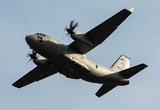Dubai Air Show 2023: Can air-launched missile stocks keep pace with a full-spectrum conflict?
France is estimated to have stocks of around 500 MICA NG missiles. (Photo: MBDA)
Until the beginning of the war in Ukraine, ammunition – or munitions – stocks were not an item of great interest. It was generally supposed that they existed in sufficient quantities for likely use.
The last 18 months have shown that a high-intensity conflict can drain reserves at a rate far higher than that envisaged. While this has been particularly true of artillery, the same problem is likely to be posed for reservoirs of air-launched ordnance.
Militaries do not necessarily plan for an immediate or prolonged conflict. The opportunity cost of platforms vs. weapons vs. munitions vs. services means that shortcuts are often taken.
Related Articles
UK pledges billions towards stockpiles in refreshed defence plan
Sweden to commit AMRAAM missiles to Ukraine with 13th support package
US government seeks an additional US$55 billion to support Israel and Ukraine
With the recent absence of NATO aerial engagements, one obvious economy is a reduction in the number of missiles and guided weapons. There exists a definite floor, however.
‘NATO-standard’ fit for a fighter mission is two medium-range (AMRAAM or Meteor) plus two short-range (Sidewinder or IRIS-T) air-to-air missiles (AAMs). This is nominally 48 in total per squadron (in terms of all aircraft being able to sortie) and with a basic 2:1 reserve, 100 per flying unit would be required.
Of course, procurement is not planned that way. In 2018 the UK's Royal Air Force (RAF) placed a major order for 200 AMRAAM C/D models at US$3.4 million each, which is enough simultaneously to arm 100 Typhoon or F-35s (or rather 100 sorties).
Clearly these will not be flown simultaneously, nor will the aircraft discharge the missiles on a daily basis, but as an idea of modern missile stocks for advanced nations, it paints a general picture.
Saudi Arabia, with a roughly similar air force, procured 280 examples in 2021 (at around $2.3 million each) largely to keep supplied for use against UAVs launched from Yemen.
Unofficial French Air Force numbers give modern MICA NG medium-range AAM stocks at around 500 examples, although older versions remain operational. Its long-range air-to-ground munition, SCALP, numbers around 200 but France donated around 25% of these to Ukraine and MBDA is still in the process of refilling this gap.
The Meteor longer-range AAM, primarily used by the Mirage 2000D and Rafale nuclear stand-off force, numbers around 200.
At the wealthiest end of the spectrum, the USAF purchases around 400 AMRAAMs per year. This is a rolling procurement to replace older – though still usable – models but indicates the number of latest-generation examples it feels necessary to have on hand.
The US Navy orders slightly less on average, but usually more than 300. If we assume that 10 years of procurement (3,000 missiles) is considered suitable for ‘first-day’ operations, and 70% of that total (likely too high an estimate) are aboard six deployed carriers at sea, this gives 350 per ship, and divided by 60 embarked fighters, that is six per aircraft.
At a very low rate of peer conflict, each aircraft firing two AMRAAMs per week would exhaust a non-resupplied carrier’s stock within a month. A Taiwan-type conflict would turn this into a matter of days.
Barring a US-China war, all of this seems healthy for a force at ‘peace’, but even low-intensity operations have a habit of burning through ordinance, fuel and spares at a higher rate than often forecast.
This article originally appeared in the Air edition of Shephard's Decisive Edge Newsletter in September 2023. To keep up to date with all of Shephard's Decisive Edge newsletters, visit our dedicated sign-up page.
Shephard's Dubai Airshow 2023 coverage is sponsored by:

Related Equipment in Defence Insight
More from Dubai Airshow 2023 | View all news
-
![South Korea and Boeing to jointly research long-endurance aerial UAVs]()
South Korea and Boeing to jointly research long-endurance aerial UAVs
Boeing and South Korea have solidified plans that would see Boeing UAV design and technology capabilities implemented locally by South Korean companies.
-
![Ukraine fields 5,000 homegrown drones amid Iran's debut of advanced Shahed-238 UAV]()
Ukraine fields 5,000 homegrown drones amid Iran's debut of advanced Shahed-238 UAV
Amid escalating tensions and technological advancements in drone warfare, Ukraine has reinforced its front lines with a delivery of 5,000 indigenous drones, paralleled by Iran's revelation of the new jet-powered Shahed-238.
-
![Brazil receives first fully operational upgraded E-99M AEW&C]()
Brazil receives first fully operational upgraded E-99M AEW&C
The updated E-99M aircraft features an updated Erieye Radar and C2 systems, as well as new EW and Identification, friend or foe (IFF) systems.
-
![Slovenia secures second C-27J Spartan tactical transport aircraft]()
Slovenia secures second C-27J Spartan tactical transport aircraft
A new agreement between Leonardo, the Italian government and Slovenia has marked the procurement of a second C-27J Spartan medium tactical transport aircraft for Slovenia, following an earlier deal signed in March 2022.
-
![Boeing shifts towards low-rate MH-139A Grey Wolf production]()
Boeing shifts towards low-rate MH-139A Grey Wolf production
Boeing's progress in the MH-139A Grey Wolf helicopter programme have marked a milestone in the transition toward low-rate initial production, following the delivery of the final test aircraft to the US Air Force.
-
![Boeing and Red 6 make moves on airborne augmented reality training]()
Boeing and Red 6 make moves on airborne augmented reality training
Boeing and augmented reality training specialist Red 6 have achieved notable progress in integrating advanced technology into training aircraft.
























